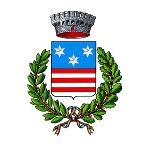Gli stucchi delle chiese
Ultimo aggiornamento: 15 ottobre 2024, 17:31
Si possono dividere in tre fasi: Prima fase: Cappella del Purgatorio (Chiesa Madre) risente ancora degli elementi della cultura manierista e barocca che veicola anche nei centri minori intorno alla metà del XVII secolo. La decorazione della seconda fase: Cappella delle Rose (Chiesa Madre) e il cui esempio emblematico è la Chiesa di S. Bartolomeo, è invece legata alla tradizione. La terza fase: Chiesa di S. Giuliano è una ripetizione stanca e nostalgica dei motivi ormai tipici dell’area culturale. Lo stesso dicasi per gli stucchi della Chiesa del Collegio di Maria e della Chiesa di S. Maria La Porta. Un discorso a parte va fatto per gli stucchi della Chiesa di S. Bartolomeo decorati da Francesco Clemente e Rocco Lo Cascio. Essi appartengono alla seconda fase che rimanda al breve fenomeno del rococò palermitano limitato agli anni 1755-65. La Chiesa di S. Stefano presenta una decorazione a stucco tardo-settecentesco estremamente sobria.
******************************
The stuccoes of the churches
They can be divided into three phases: First phase: Purgatory Chapel (Mother Church) is still affected by the elements of Mannerist and Baroque culture that it also conveyed to smaller centers around the mid-17th century. The decoration of the second phase: Chapel of Roses (Mother Church) and whose emblematic example is the Church of St. Bartholomew, on the other hand, is linked to tradition. The third phase: Church of S. Giuliano is a tired and nostalgic repetition of motifs now typical of the cultural area. The same goes for the stuccoes of the Church of the College of Mary and the Church of St. Mary La Porta. A separate discussion should be made for the stuccoes of the Church of St. Bartholomew decorated by Francesco Clemente and Rocco Lo Cascio. They belong to the second phase that refers to the brief phenomenon of the Palermitan rococo limited to the years 1755-65. The Church of S. Stefano presents an extremely sober late 18th-century stucco decoration.
